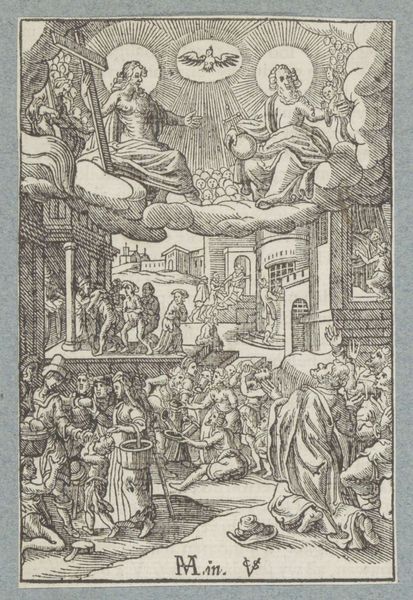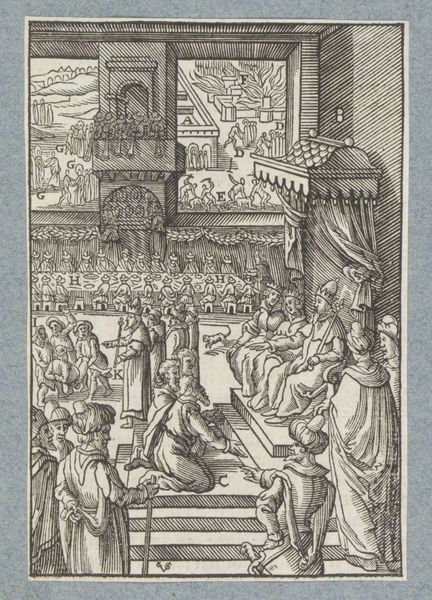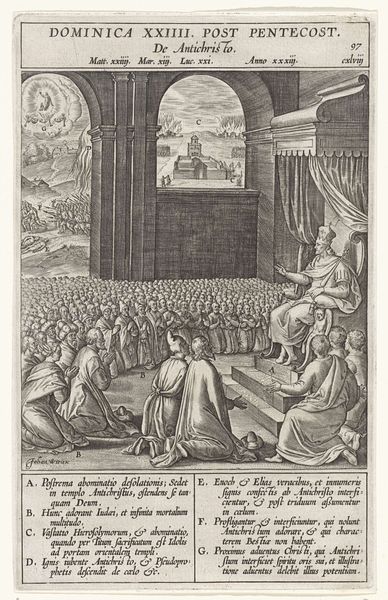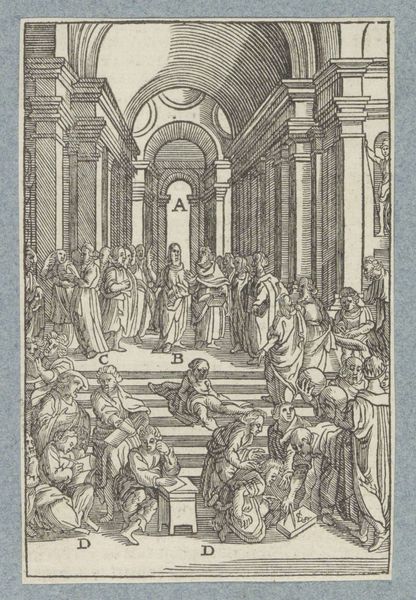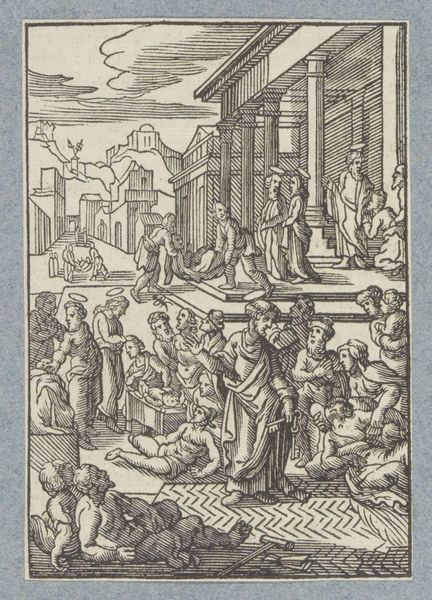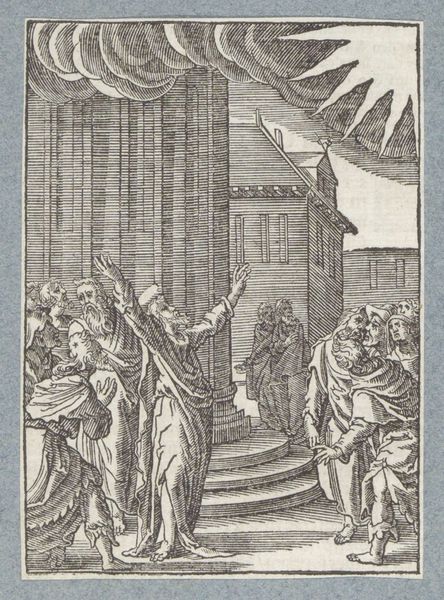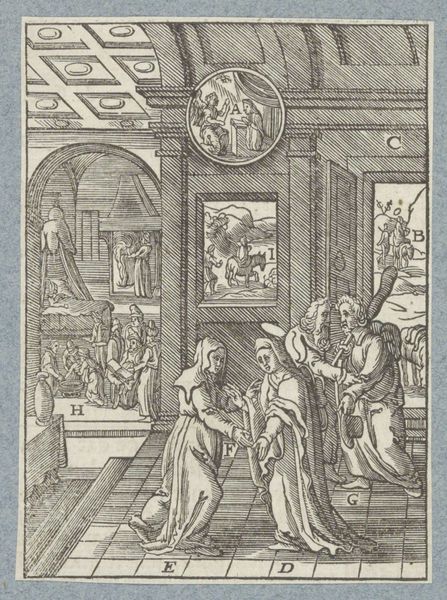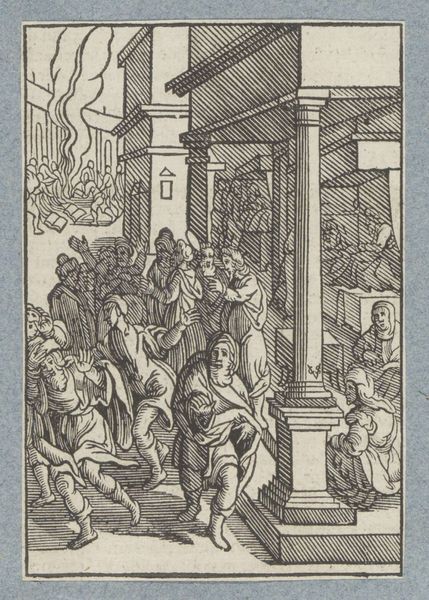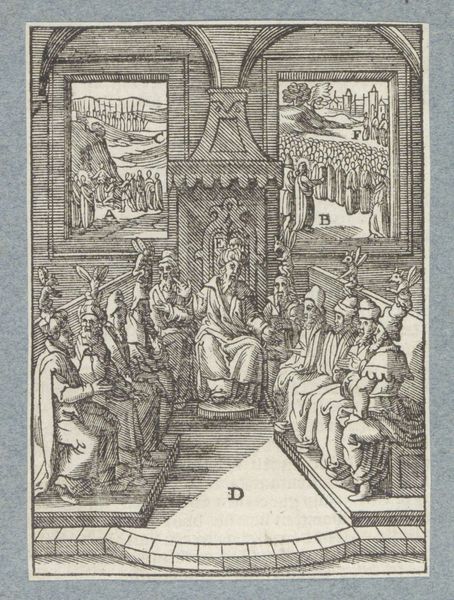
drawing, print, pen, engraving
#
drawing
#
narrative-art
#
baroque
# print
#
pen sketch
#
figuration
#
line
#
pen
#
history-painting
#
engraving
Dimensions: height 104 mm, width 74 mm
Copyright: Rijks Museum: Open Domain
Curator: This print, titled "Valse messias," was created around 1629 by Christoffel van Sichem II and is held at the Rijksmuseum. It employs engraving on paper to illustrate a narrative scene. Editor: My initial impression is one of pronounced visual complexity; there are dense crowds and numerous symbolic elements meticulously rendered in contrasting black lines. The formal architectural structure provides a clear sense of depth, even though the whole scene appears slightly theatrical. Curator: The complexity stems from Sichem's attempt to condense several narrative layers into a single image. We see figures prostrating, others observing an enthroned leader, and then apocalyptic visions occurring in the background arches. Consider the historical context: this was likely created during a period of significant religious and political upheaval. These details were aimed at a specific early modern audience primed to understand the coded meaning of the symbolism included. Editor: Agreed, it’s definitely operating within the visual language of its time. However, look closely at the artist’s technical proficiency in depicting the textures through varying densities of line work; the draping fabrics contrast vividly with the harsh geometric precision of the architectural frame. Curator: That contrast echoes the larger tensions of the era – the tension between divine decree and human structure, sacred and profane, authority and autonomy. For contemporary viewers, engaging with the historical and theological debates it implicitly stages reveals powerful dimensions that relate to ongoing dialogues surrounding power, belief, and resistance. Editor: But do you think that its reliance on symbolic communication threatens the legibility and universality of the image itself? A viewer unfamiliar with the codes of that era will appreciate it first and foremost as a masterful essay in monochrome aesthetics. Curator: Perhaps, but the enduring power of "Valse messias" resides not merely in its formal mastery, but its capability to invite speculation about historical circumstances, and the persistent questions regarding the legitimacy of authority and societal expectations it incites, that remain crucial even now. Editor: Ultimately, it is an incredibly powerful interplay between form and content; by analyzing it, one can not only appreciate Baroque aesthetic preferences, but also acquire greater understandings about humanity through art.
Comments
No comments
Be the first to comment and join the conversation on the ultimate creative platform.
